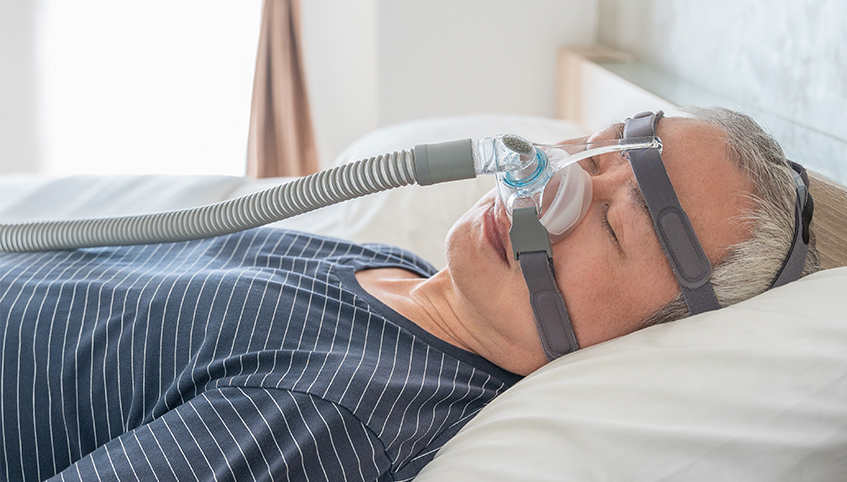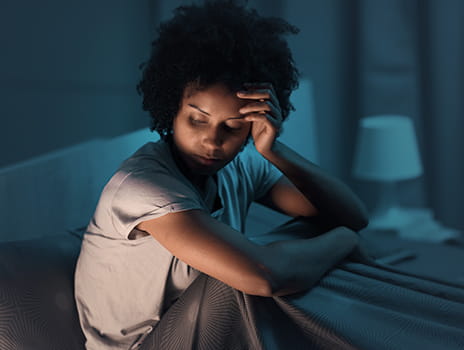August 13, 2024
Sometimes all the good sleep hygiene routines in the world don’t make a difference.
Good sleep practices include:
- Avoiding alcohol, caffeine and large quantities of food near bedtime
- Getting exercise or time outside during the day
- Not taking daytime naps
- Using a dim light near bedtime and limiting screen time
If you are doing all those but still feel exhausted upon waking or experience daytime tiredness, you may need to see if you have an underlying sleep disorder.
Diagnosing a sleep disorder
The first step is to talk with your primary care physician about your sleep troubles. Some common symptoms of sleep disorders are:
- Changes in your health that don’t have another explanation, like increases in blood pressure, heart palpitations or difficulty losing weight
- Daytime drowsiness
- Difficulty concentrating
- Mood changes
- Snoring
Your doctor may refer you to a specialist trained in sleep medicine. Our team includes physicians from cardiology, neurology, otolaryngology, pediatrics, psychiatry and pulmonology.
They may also send you for additional testing to see if you are experiencing obstructive sleep apnea or another sleep disorder.
You might think of an in-lab sleep study, in which you stay overnight and have small sensors attached to your head, face, chest and legs.
However, most people can do a home sleep test instead of going to a lab. On the day of your sleep test, you will visit a health system office and pick up a small device that looks a lot like a smartwatch. Before bed, you will put on the watch and place a fingertip sensor. Then, you will go to sleep in the comfort of your own bed. The next day, the device is returned to the office, and results are added to your MyChart patient portal when available.
“Home testing is really a convenient way of finding out breathing disorders in general, and we know that a large majority of sleep disorders could be breathing disorders,” says Saurav Luthra, MD, a sleep specialist at the health system. “So, it's a really convenient technology to focus on breathing, oxygen levels and heart rate fluctuations.”
Home testing may not be an option if you have a history of seizures or heart failure or require supplemental oxygen at night. It is also not a good option if you’re concerned about leg movements, teeth grinding or disruptive dreams waking you up at night. Those are better studied with a polysomnogram.
Treatment for sleep apnea
Obstructive sleep apnea is where your airway is closing at nighttime. When your airway either partially or fully closes, it can lead to a drop in your oxygen levels.
“When somebody develops moderate or severe apnea, they don't get enough deep sleep. So that starts to impact their memory, their concentration and their mood,” says Dr. Luthra.
If your sleep test or sleep study does reveal signs of sleep apnea, you will discuss treatment options with your physician.
Continuous positive airway pressure therapy (CPAP) is a standard treatment for sleep apnea. This is a medical device that can be purchased at MyHealth at Home. The team at MyHealth at Home is part of The University of Kansas Health System. In addition to helping with a CPAP device, they can also provide respiratory therapy consultations, in-home setup and ongoing consultations.
Selecting the right equipment and getting the best fit is very important to successfully treating sleep apnea.
“Make sure that you use the right type of mask that is most comfortable for you,” says Dr. Luthra. “There's more data now showing that pressure gone through the nose is more natural, helps patients sleep better and has a more positive impact.”
So, it is recommended to start with a nasal mask, but there are more than 30 different varieties of CPAP masks – you’ll find the one that is best for you.

Alternatives to CPAP
Inspire therapy is a new option for treating sleep apnea if CPAP doesn’t work well for you. Inspire is an implantable device that monitors your breath at night and opens your airway.
Other treatment options include:
- Lifestyle changes: Losing weight or avoiding certain substances can also help improve sleep apnea symptoms.
- Medication: You might take medications to treat underlying conditions, like hypertension or diabetes, or be prescribed medications to improve the quality of sleep.
- Positional therapy: For mild cases of apnea, a positional device that keeps you on your side while sleeping may be helpful.
- Surgery: Surgical procedures to treat sleep apnea are also available, although they are not usually recommended as a first line of treatment.
All of these treatments are available from specialists within The University of Kansas Health System.





